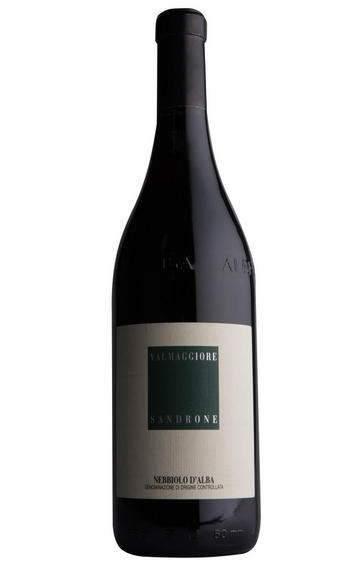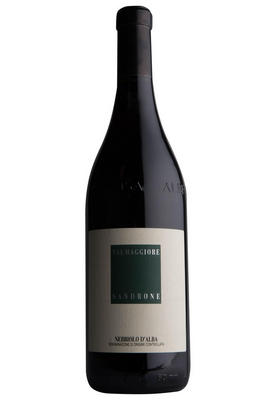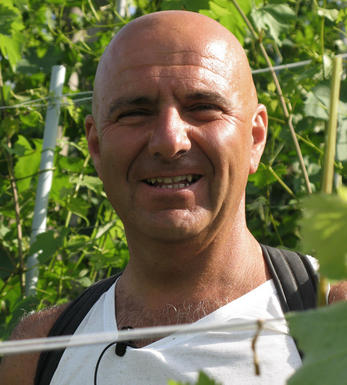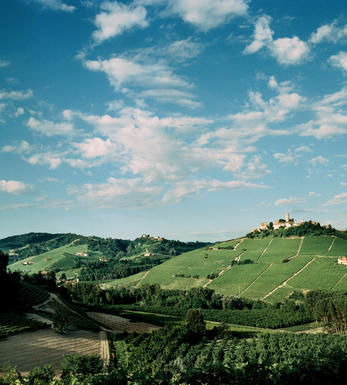
2019 Nebbiolo d'Alba, Valmaggiore, Luciano Sandrone, Piedmont, Italy

About this WINE

Luciano Sandrone
Today, Sandrone is one of Barolo’s most admired names, but this producer came from humble beginnings. The son of the local carpenter, Luciano Sandrone always dreamed of owning his own vineyard and making his own wine. He achieved his lifelong ambition in 1978, buying a small plot in Cannubi Boschis. This now-legendary vineyard proved pivotal in securing his family’s fortunes; Luciano’s wines were among the first in the region to garner worldwide acclaim. Driven by Luciano’s clarity of vision, the estate has since expanded to over 20 hectares. His original vineyard, now in front of the family’s home and winery, produces the fruit that goes into their Aleste Barolo. Since the early ’90s, Luciano has worked alongside his children Luca and Barbara, and increasingly his grandchildren Alessia and Stefano.
Barbara Sandrone beams with pride for ’18, which draws similarities to the great ’08 and ’12 vintages. It was a challenging growing year in the vineyards, but the end of the growing season was calm, and the resulting wines are classical and fine. The suppleness of the vintage mutes some of the firm intensity we know from Sandrone, but the wines do not suffer from it. Instead, they feel alive and open, coiled with that serious, polished edge we know and admire from this resplendent family cantina.

Nebbiolo d'Alba
Nebbiolo d’Alba, a historical Italian wine DOC created in 1970, is synonymous with the crunchier Nebbiolo wines of the Roero region, north of the river Tanaro.
This DOC can be applied to all wines lying outside the Langhe region (ie Barolo & Barbaresco), of which the sandier Roero makes up the largest part.
Nebbiolo d’Alba DOC has to be 100 percent Nebbiolo, and must be aged for 12 months prior to release. Notwithstanding the DOC restrictions, several prominent Barolo and Barbaresco producers invested in Roero Nebbiolo vineyards during the 1990s, such as Valmaggiore.
It is not uncommon for Langhe producers to supplement their Langhe Nebbiolo fruit with that bought from the Roero.

Nebbiolo
Nebbiolo is the grape behind the Barolo and Barbaresco wines and is hardly ever seen outside the confines of Piedmont. It takes its name from "nebbia" which is Italian for fog, a frequent phenomenon in the region.
A notoriously pernickety grape, it requires sheltered south-facing sites and performs best on the well-drained calcareous marls to the north and south of Alba in the DOCG zones of Barbaresco and Barolo.
Langhe Nebbiolo is effectively the ‘second wine’ of Piedmont’s great Barolo & Barbarescos. This DOC is the only way Langhe producers can declassify their Barolo or Barbaresco fruit or wines to make an early-drinking style. Unlike Nebbiolo d’Alba, Langhe Nebbiolo can be cut with 15% other red indigenous varieties, such as Barbera or Dolcetto.
Nebbiolo flowers early and ripens late, so a long hang time, producing high levels of sugar, acidity and tannins; the challenge being to harvest the fruit with these three elements ripe and in balance. The best Barolos and Barbarescos are perfumed with aromas of tar, rose, mint, chocolate, liquorice and truffles. They age brilliantly and the very best need ten years to show at their best.


Buying options
Add to wishlist
Description
This wine is a bin-end, discounted by 10%. Excludes BBX stock.
Valmaggiore is a dramatic and dazzling location. On Roero’s sandy soils, it’s a south-facing, steeply sloping amphitheatre; it delivers a unique and independent version of Nebbiolo. Sandrone don’t seek a “mini-Barolo”; this has a more limpid and transparent expression, yet replete with delicate perfumes and finesse, with a line of tasty granular tannins. Drink 2022-2032.
wine at a glance
Delivery and quality guarantee